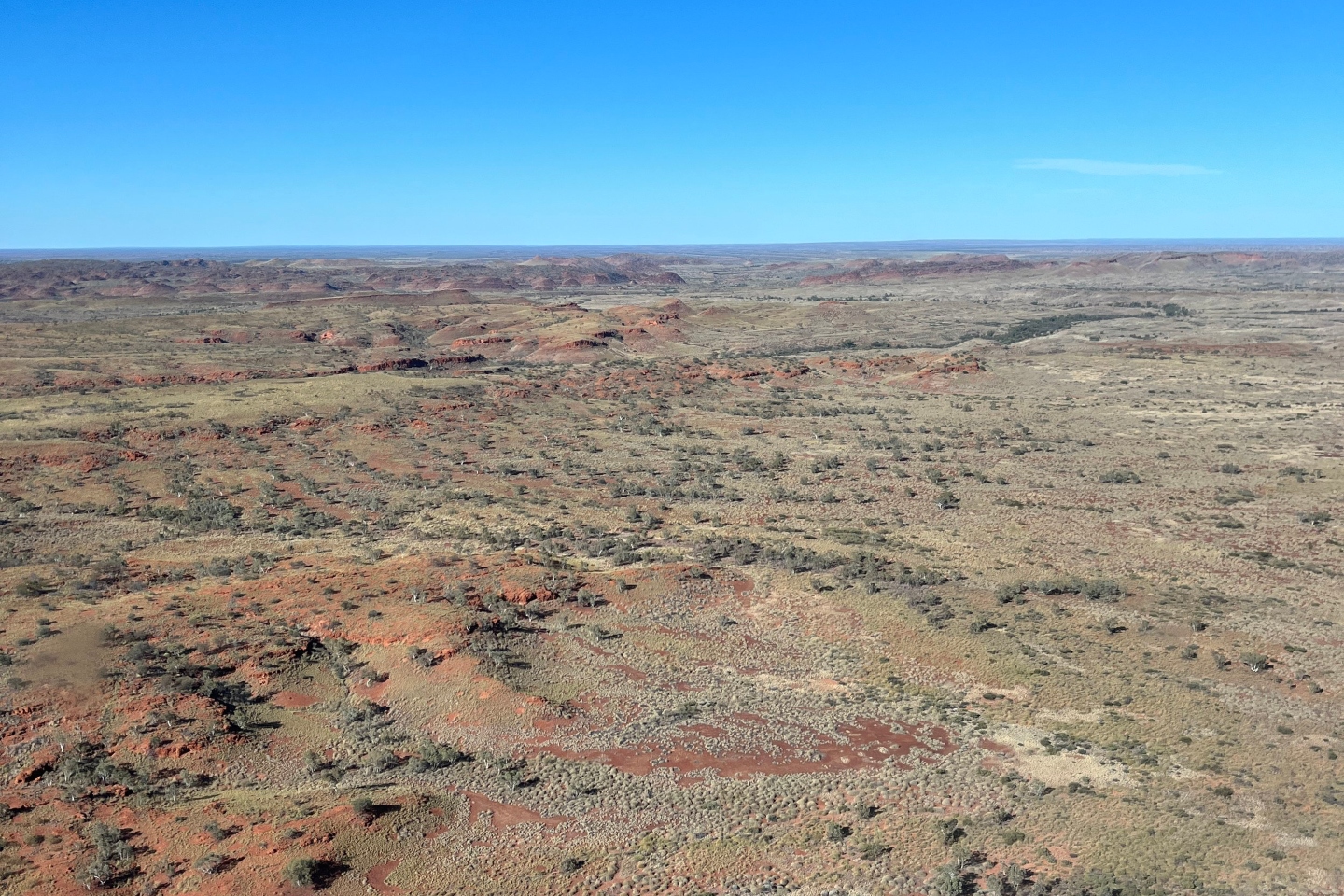Lycaon Resources has secured its final heritage and program of works approvals to clear the way for drilling at its multi-element Stansmore carbonatite project in Western Australia’s West Arunta region. The heritage clearance survey, which was completed in July, relates to the company’s three priority Stansmore, Volt and Ions targets where it is chasing niobium, rare earths and iron oxide copper-gold.


Lycaon Resources has secured its final heritage and program of works approvals to clear the way for drilling at its multi-element Stansmore carbonatite project in Western Australia’s West Arunta region.
The heritage clearance survey, which was completed in July, relates to the company’s three priority Stansmore, Volt and Ions targets where it is chasing niobium, rare earths and iron oxide copper-gold (IOCG). Management says the targets constitute a priority triad in a suite of six anomalous zones identified in a detailed geophysical review undertaken by geophysical specialists Southern Geoscience Consultants (SGC) at the company’s fully-owned 173-square-kilometre Stansmore project.
They comprise three distinct magnetic anomalies in the northern half of the tenement area and have been interpreted as potential analogues to Encounter Resources’ Crean alkaline/carbonatite intrusive type of mineralisation, about 90km south of Stansmore.
Recent shallow drilling at Crean – less than 100m deep – unveiled niobium and rare earths potential in intercepts ranging between 18m and 50m thick and running niobium pentoxide grades up to 3.2 per cent.
Management says its geophysical modelling shows the Stansmore anomaly to resemble other notable niobium discoveries in the region made by WA1 Resources and Encounter.
Previous limited exploration in the Stansmore project area had been aimed more specifically at gold, diamond and uranium targets. But more significantly, most drilling was only relatively shallow and did not get to the depth of the magnetic anomalism of the Stansmore target, which showed up initially as a 700m-by-400m ovoid anomaly estimated to sit at about 150m below surface.
The Volt target lies about 8.5km north-west of Stansmore and is slightly bigger at about 800m by 600m and is about 200m below surface. The Ions target expresses a smaller magnetic signature to Volt, but is only 2km to the south-east and is close enough to be a potentially-related intrusive, or even an apophysis, off the main Volt body.
In addition to SGC’s regional overview and initial target identification, Lycaon arranged for further geophysical modelling to refine targets for its proposed maiden drilling program, which it plans to kick off early next month and complete within three weeks. That work was undertaken by geophysical expert Terry Hoschke and included the reprocessing of magnetic data and a 3D magnetic data inversion to refine drill targets.
Lycaon Resources technical director Tom Langley said: “We are keen to commence the upcoming maiden drill program as we become the first-ever explorer to drill the Stansmore magnetic anomaly below the thin cover of sand. We aim to emulate WA1’s success in making a major discovery in the West Arunta region and are encouraged by further geophysical modelling completed by industry expert Terry Hoschke.”
The 3D inversion work exploited the best publicly-available airborne magnetic data for the area (about 14 years old), which was flown on 200m-spaced north-to-south lines, with a nominal terrain clearance of about 50m. The inversion review improved the resolution of the Stansmore target anomaly and showed it to be a south-dipping, pipe-like body measuring about 500m in diameter, with its top estimated to lie at a depth of about 120m below surface.
Armed with the new information, Lycaon says it is looking at drilling to nail the main body of the target at about 320m depth.
WA1’s discoveries at Luni and P2 were also big first-order geophysical anomalies that had never been drilled. Niobium mineralisation discovered to date at Luni is seen as unique around the world because of the high grades that can exceed 2 per cent.
The presence of high-grade niobium and rare earths in carbonatite intrusions, identified by two companies in close proximity to each other in their first-ever drilling programs, points to the highly-prospective and underexplored character of the West Arunta region.
Other encouraging similarities or analogues include discoveries such as Greatland Gold’s 8 million-ounce high-grade underground Havieron gold-copper deposit, 45km east of Newcrest Mining’s Telfer operation in the Paterson province in WA’s East Pilbara region. Evolution Mining’s Ernst Henry copper-gold mine was also discovered in terrain of Proterozoic age, 38km north-east of Cloncurry in Queensland.
The remaining three of Lycaon’s six priority targets determined by SGC lie in the south-east part of its tenement area and comprise the smaller Edi, Earl and Menlo anomalies. They are elevated magnetic responses that sit on or adjacent to regional-scale north-west/south-east linear magnetic trends and could represent either alkaline intrusives or linear IOCG targets.
The company has at least half a dozen solid target indications from high-quality geophysical processing that are supported by a range of analogous geophysical responses and interpreted potential-intrusive outlines, as seen in other recent discoveries. Management says recent drill results from WA1 and Encounter show exploration in the area is delivering good strike rates in drilling regionally-significant geophysical anomalies such as its Stansmore target.
Initial interpretations indicate that the targets could contain a broad range of commodities and Lycaon says it will run analyses for niobium and rare earths mineralisation and also for signatures relating to IOCG deposits.
The company has made a successful application under the WA Government’s exploration incentive scheme (EIS) for a co-funding grant of up to $180,000 for two proposed drillholes designed by SGC to test its Stansmore and Volt targets.
Is your ASX-listed company doing something interesting? Contact: matt.birney@businessnews.com.au














